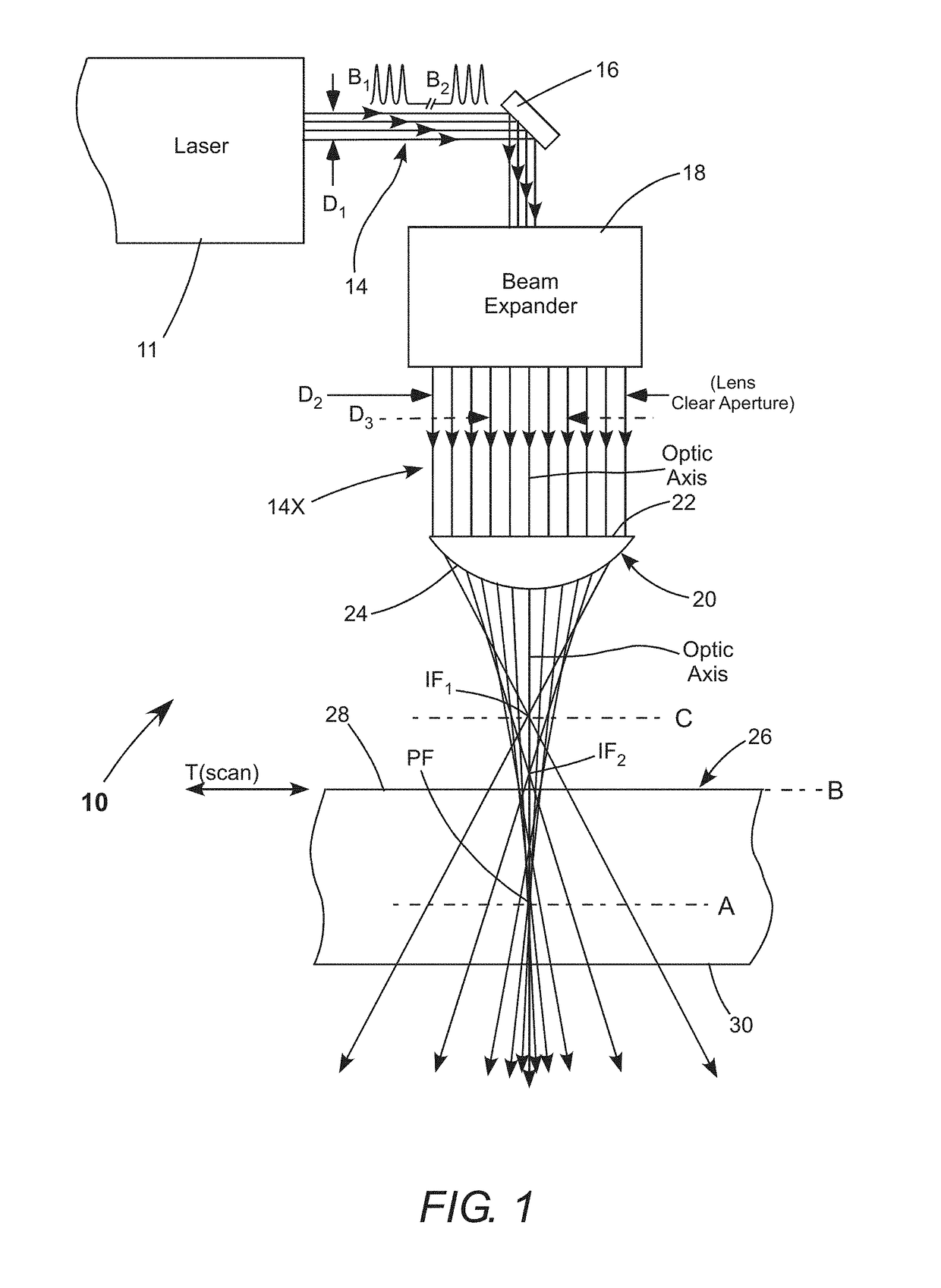Filamentary cutting of brittle materials using a picosecond pulsed laser
a pulsed laser and filament cutting technology, applied in the field of cutting glass, can solve the problems of inability of inventors to reproduce the results described in the publication, and the cost of axicons and phase masks to produ
- Summary
- Abstract
- Description
- Claims
- Application Information
AI Technical Summary
Benefits of technology
Problems solved by technology
Method used
Image
Examples
Embodiment Construction
[0019]Turning now to the drawings, wherein like features are designated by like reference numerals, FIG. 1 schematically illustrates a preferred embodiment 10 of laser apparatus in accordance with the present invention for filamentary cutting glass. Apparatus 10 includes a mode-locked pulsed laser 11 arranged to deliver pulses in bursts of pulses, for example B1 and B2, with pulses in the bursts separated by between about less than about 100 nanoseconds, and with the bursts deliverable at a burst-repetition frequency between about 100 kHz and about 500 kHz. The pulses have a duration of about 15 ps or less.
[0020]The burst-repetition frequency determines the temporal separation of the multi-pulse bursts with 100 kHz, for example, corresponding to a separation between bursts of 10 microseconds (μs) from the beginning (first pulse) of one burst to the beginning (first pulse) of the next burst. Preferably there are between 2 and 10 pulses in a burst. One preferred temporal separation be...
PUM
| Property | Measurement | Unit |
|---|---|---|
| Time | aaaaa | aaaaa |
| Time | aaaaa | aaaaa |
| Frequency | aaaaa | aaaaa |
Abstract
Description
Claims
Application Information
 Login to View More
Login to View More - R&D
- Intellectual Property
- Life Sciences
- Materials
- Tech Scout
- Unparalleled Data Quality
- Higher Quality Content
- 60% Fewer Hallucinations
Browse by: Latest US Patents, China's latest patents, Technical Efficacy Thesaurus, Application Domain, Technology Topic, Popular Technical Reports.
© 2025 PatSnap. All rights reserved.Legal|Privacy policy|Modern Slavery Act Transparency Statement|Sitemap|About US| Contact US: help@patsnap.com



